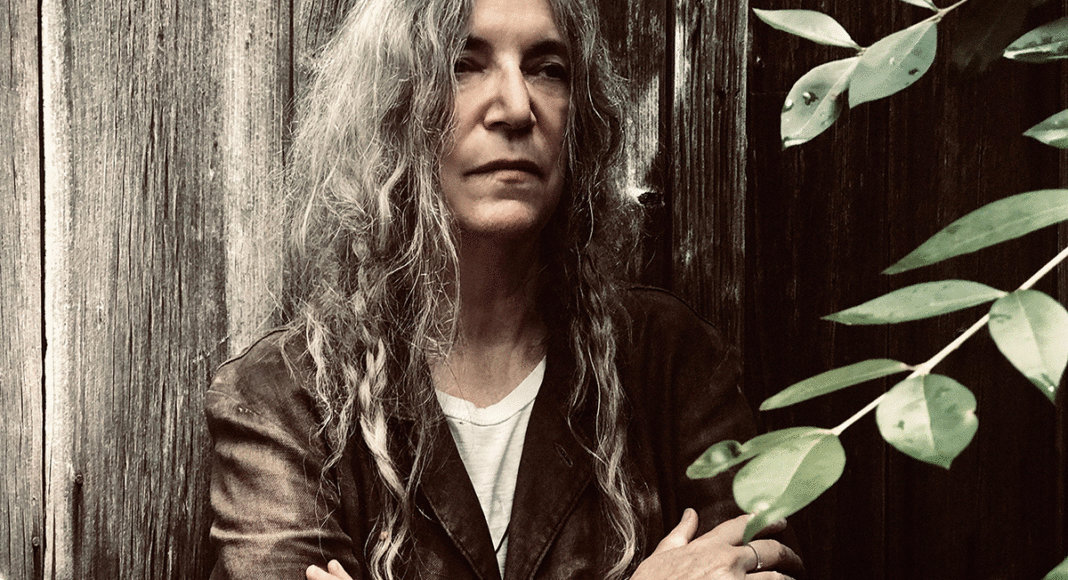My family and I have a New Year’s tradition, born of my daughter’s experience living in Korea.
We bypass staying up past midnight—a custom too freighted with booze and melancholia anyway. Instead, we rise before dawn and greet the sunrise on the beach, as the Koreans do. In our case, we largely have Seabright Beach in Santa Cruz to ourselves. Then it’s off to the best breakfast we’ll have all year, at the Crow’s Nest.
If Patti Smith’s new memoir Year of the Monkey is to be believed, a few years ago, while we were lingering over our crab omelettes and brioche, Smith herself was about a mile up the coast, stumbling alone around an unfamiliar waterfront looking for breakfast and, more urgently, coffee. She found the Ideal Bar and Grill—which was, alas, closed—then plopped herself down at a bench to brood.
Gifted with hindsight or clairvoyance, would I have abandoned my family to rescue Patti Smith from her coffee-less misery? Almost certainly. But The Year of the Monkey might have turned into a much different book.
Dreamy, lyrical, even hallucinatory, Monkey is a wistful chronicle of Smith’s life in 2016, and the latest in a series of her enormously successful memoirs, preceded by the National Book Award-winning phenomenon Just Kids (2010) and its follow-up M Train (2015).
The new book hinges on two significant losses in Smith’s life: the deaths of her close friend and music producer Sandy Pearlman, and even closer friend—and former lover—playwright Sam Shepard.
But it begins in Santa Cruz, on New Year’s Day, with Smith waking up at the iconic Dream Inn, which throughout the book she calls “the Dream Motel” as a way to take ownership of it and enlist it as the book’s central metaphor.
That New Year’s Day opening—Smith lost and alone in a part of Santa Cruz which is usually clogged with tourists, scrounging for a cup of Nescafe, and dialoguing with the Dream Inn sign—is key in setting a tone. A midwinter ghost-town vibe pervades this whole book, even as it follows Smith to San Diego, Venice Beach, Arizona, Kentucky, Seattle, and New York.
STREET POET
Before she was a publishing-industry powerhouse, before she was a punk-rock icon, Patti Smith was a street poet.
Considering that the world has consistently given her nothing but fame and applause for following her muse wherever it may take her, it’s no shock that her latest book defies all familiar categories, playfully exploring the seam between reality and fantasy. It’s full of half-buried dream imagery and mysterious characters who emerge from somewhere out of the American landscape. Smith herself calls this weird state of consciousness “skating along the fringe of dream,” and later, “more of a visitation, a prescience of things to come, like a tremendous swarm of gnats, black clouds obscuring the paths of children reeling on bicycles.”
Literal-minded readers looking for a documentary tone or for rockstar gossip are likely to come away perplexed, even mystified by this swirl of images, themes and references—Australia’s mystical Ayers Rock, Chilean novelist Roberto Bolaño, ’80s pop singer Belinda Carlisle, on and on. But fans of Smith’s previous memoirs should know the score by now. Smith’s poetic sensibility is driving the bus here, and anyone who takes Monkey on its own terms, as a 170-page prose poem, will be rewarded with a rich, kaleidoscopic narrative of surprises and insights.
Death and loss haunt nearly every sentence of this book—again, no shock to anyone who has experienced Patti Smith’s work. The political horror that accompanies any memory of 2016 is referenced only obliquely—“an avalanche of toxicity infiltrating every outpost” as she called the 2016 election. Instead, the beating heart of the book comes with Smith’s visits to Shepard at his Kentucky horse ranch. Shepard, nearly as admired in his artistic realm as Smith in hers, was afflicted with ALS in his final years. And Smith’s account of the once-virile playwright—no longer in control of his body, darkly commenting “We’ve become a Becket play”—is heartbreaking.
Smith, 72, has been as intimate with grief as any living artist, having survived the death of her first love and muse Robert Mapplethorpe and her husband, guitarist Fred “Sonic” Smith, along with countless others close to her. Her previous books (and her particularly strong late-1990s string of albums) have been fearless meditations on not just coping with loss, but learning to incorporate the memories and spirits of those she’s lost in her own dream of life.
She chronicles her string of losses in Monkey and adds, “Yet still I keep thinking that something wonderful is about to happen. Maybe tomorrow.”
That’s not denial. That’s defiance.













